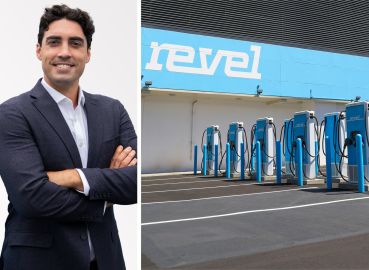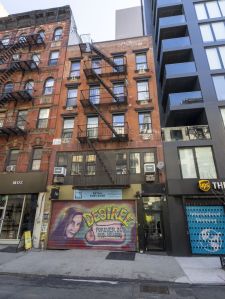Judging the State of Retail, Post-Apocalypse
By Tom Acitelli May 13, 2019 12:47 pm
reprints
The U.S. Commerce Department figures for retail nationwide in December 2018 were so bad that some thought the drama in Washington had messed with the agency’s number-crunching.
“I’m actually wondering whether the government shutdown created issues for them in terms of data collection and quality,” an analyst told Bloomberg in February. The figures showed a 1.2 percent decline in retail sales nationwide for the month that includes the holiday shopping season—the worst since September 2009, when the U.S. was emerging from the Great Recession.
It turned out the Commerce Department was wrong but not in the way the skeptics thought. Things were, in fact, worse. Sales had declined 1.6 percent, according to revised numbers released further into 2019.
Yet, despite such headline-grabbing bad news for retail, there are signs that that particular segment of commercial real estate is stabilizing, even rebounding, as we head toward the second half of 2019—at least from a financing perspective and perhaps from ownership and leasing perspectives as well.
Lenders, analysts and brokers say they see a noticeable pivot toward what some describe as “best-in-class assets” and away from more uncertain prospects. Such an approach, though, contains the seeds of more disruption for retail, as some assets attract more capital and others struggle.
“Not all of these deals are created equal,” said Dustin Stolly, a vice chairman at Newmark (NMRK) Knight Frank who co-heads that company’s financing operations and oversees its debt and equity sourcing as well as commercial-asset loan sales. “It’s totally dependent.”
‘Constant disruption’
It’s a familiar story by now: Across the country, online shopping and changing consumer habits have backed brick-and-mortar retail into a corner. But the reality is more complicated than that.
“As retail collides with adjacent consumer-focused sectors, the industry continues to undergo constant disruption,” a 2019 market outlook from accountancy Deloitte said. “However, amid the disruption, one thing remains consistent: Consumers are becoming more powerful with expectations of having it all.”
That “having it all” increasingly means selling an experience to consumers when they’re at a brick-and-mortar shop and having a reliable online presence.
E-commerce sales were up an estimated 11.8 percent annually in the fourth quarter of 2018, according to the Commerce Department, well ahead of the 3.5 percent quarterly increase for all of retail. E-commerce accounts for more than 11 percent of total sales, the agency said in March. The share was less than one-third of that 12 years ago.
As a result of this trend, bankruptcies and liquidations have seeded a veritable graveyard of household names since 2015.
In 2018 alone, Sears, Mattress Firm, David’s Bridal, Brookstone, Nine West and Claire’s declared bankruptcy with the likes of Diesel and Payless joining them so far in 2019. According to a March report from CB Insights, at least 68 retailers have gone bankrupt since the start of 2015 (that year claimed American Apparel and Radio Shack, among others).
Predictably, the bankruptcies and liquidations have led to increases in vacancy rates and declines in retail rents in different markets (never mind bad press about the retail industry and sector). In Manhattan, for instance, asking retail rents declined year over year in the first quarter of 2019 in nearly all 11 submarkets that brokerage Cushman & Wakefield tracks.
Prominent flagship stores in the nation’s top retail market have closed during the past 24 months, including Lord & Taylor, Henri Bendel, Ralph Lauren and Tommy Hilfiger. Meanwhile, entire malls in different U.S. cities have closed, perhaps most prominently the Westside Pavilion in Los Angeles, which developer Hudson Pacific Properties is converting into an office complex for Google.
The “constant disruption” has claimed not only retail space and retail brands but has taken the market in entirely new directions during the past couple of years. Coworking, for instance, is carving quite a niche from the carcass of conventional retail. Coworking space in retail—particularly in increasingly empty malls and shopping centers—will grow at a rate of 25 percent yearly through 2023, according to an August 2018 report from brokerage JLL (JLL).
That means about 3.4 million square feet, or more than 5 percent of the square feet of coworking space currently in conventional office buildings. And the average retail-based coworking location of 16,400 square feet is slightly larger than the typical mall retailer’s footprint, JLL said.
Best-in-class
For all these troubles and shifts in the retail market nationwide, analysts, lenders and brokers nevertheless see some stabilization heading into the middle of 2019. In particular, retail will continue to shed some of its risk for lenders.
In simple terms, it appears that the trends since 2015 have carried off assets that could not compete or that were otherwise troubled. The ones left behind are those strong enough to survive—or willing to shift in terms of luring consumers with add-ons such as e-commerce or entertainment options.
This is especially true in financing for retail projects, expansions, deals and other moves in the industry, observers said. One analyst, for instance, told CO that “ ‘mall’ really was a four-letter word” in 2017, and that concerns about that particular financial sector stretched back to 2012.
But those were the malls that were not adapting to the consumer shift toward e-commerce and retail experiences, such as entertainment baked into a restaurant outing or a digital component within a traditional shop. Many, too, were in tertiary and secondary locations.
For the malls and other retail that have shown resiliency—and that tend to be in more central locations and the nation’s larger metropolitan areas—the financing is there. And lenders are doing their homework to be sure of that resiliency, said Drew Myers, a consultant with research firm CoStar (CSGP).
“For good, quality retail, I think financing is still readily available,” Myers said. “I think that is an important distinction.
“I think the big change over the last couple of years,” he added, “is that lenders are a little bit more locally focused with lending, and that means they are digging into the localized areas, the sub-sectors, to really evaluate their loans and the construction and deal projects going on.”
Perhaps top in its class in terms of attractive retail for lenders is the food and grocery asset. Myers said that shopping hubs with these types of tenants—specialty vendors such as Whole Foods or Trader Joe’s or more general grocers—are more likely to maintain consistent cash flow and value in the investment market. They are also less likely to be burdened by heavy debt obligations, he said.
Debt can put off would-be lenders. “Great retail projects will attract financing, and the interest rate environment remains accommodative,” Greg Reimers, Northeast market manager for real estate banking at J.P. Morgan Chase, said over email. “That said, retail projects that may be struggling could face a challenging financing environment when rolling their debt.”
Aaron Appel heads debt and equity finance for JLL’s New York capital markets practice. He said, “For the most part, the same subset of lenders that has always lent on retail continues to do so.” But he added a caveat: “I think there is more of an emphasis on sponsorship that has historically been able to outperform the marketplace receiving best-in-class asset pricing.”
The retail shakeout of sorts since 2015 has given lenders more confidence in investing in the retail market, according to industry insiders—though, again, it’s in assets and areas that have ridden out the bad times. As for sponsors, landlords and developers with proven track records—familiar names like Brookfield Properties, Simon, SL Green and Vornado Realty Trust—are particularly attractive, Appel said.
“Maybe the condo developer who’s got a vacant retail box and needs to finance it, may have a tougher time getting best-in-class pricing,” he said.
Oftentimes, too, it comes down to fundamentals such as leasing. “Lenders are actively pursuing retail deals where there’s somewhere they’re fully letted,” Stolly of Newmark Knight Frank said of retail properties. “There is certainly more liquidity than there was two years ago.”
Stolly and others, though, note that even with more capital off the sidelines now following the shakeout, retail has never been a big play for lenders in general. Lenders, including those in commercial mortgage-backed securities and at conventional banks, are instead more comfortable with other, more stable commercial real estate sectors.
“It’s not the favorite asset class,” said Mark Folger, CEO and president of lender Acres Capital. “Certainly, the CMBS market—unless it’s a sort of Class A, pristine-type property—it’s not focused too much on retail assets. Banks are still doing some the local neighborhood deals.”
Otherwise, alternative lenders are particularly active in retail but again generally only for healthier assets that have adapted amid the disruption.
“Right now,” Folger said, “the alternative lenders like us—sort of the private lenders—are trying to pick up some of the slack.”
The most active alternative lenders in retail are those that do not do securitized loans or that have their own balance sheets “and are kind of just looking for different types of opportunities,” he said.
Change a quarter
Four retailers—Kmart, Sears, Bon-Ton and Toys R Us—accounted for 75 percent of the 155 million square feet of retail space announced for closure in 2018 nationwide, according to CoStar.
The same Commerce Department that dropped the December bomb on holiday retail sales showed a 3.6 percent annual uptick in such sales for March 2019. And those figures showed a 2.9 percent quarterly increase compared with the start of 2018.
Moreover, a September 2018 report from Moody’s Investors Service found that occupancy rates and asking rents nationwide were trending upward for 2019. The occupancy rate for shopping centers is expected to stay just above 90 percent, and the gross average asking rent per square foot could near $21. The occupancy rate was under 90 percent in 2015, and the gross average asking rent was around $19.
Finally, some of the biggest recent retail casualties, including Sears, were not necessarily felled due to lackluster sales, though that was part of it. It was instead the financial demands of their private equity parents, including dividend payments, according to Robb Paltz, an associate managing director in Moody’s structured finance group. Those demands curtailed the retailers’ ability to pivot in a shifting marketplace.
In other words, the death of retail might be greatly exaggerated—at least now that the convulsions of the past few years are easing. The survivors that have adapted and are adapting are still drawing financing even if retail traditionally is not a target for most lenders. The industry is still drawing customers, too, either in their brick-and-mortar locations or online.
Two factors going forward help. The first is a static supply of fresh retail space. The same September 2018 Moody’s report noted the relative lack of new retail construction nationwide with year-over-year growth in supply of well under 1 percent. That rate is expected to trend to near-zero during 2019.
Compare that with office, multifamily and hotel construction. Each has seen an uptick in the growth rate of new supply—and Moody’s anticipates that continuing for 2019. The year-over-year growth rate in supply for hotels in particular could crest 3.5 percent this year. Large-scale retail development on the other hand has basically stopped.
Meanwhile, the U.S. economy remains strong—the unemployment rate was 3.8 percent in March and the gross domestic product grew at an annualized rate of 3.2 percent in the first quarter of 2019.
But this static supply and the economy’s years-long bull run does not mean that retail’s survivors are out of the woods yet.
For one, economic growth is forecast to slow heading into 2020—to as low as under 2 percent a quarter, according to Deloitte. The consultancy cited “interest rate hikes by the Federal Reserve and the ending of fiscal stimulus measures” in 2019 as among the uncertainties that could drag on the economy heading into 2020. “Also, higher tariffs are likely to shave off a bit less than half a percentage point from GDP growth in 2019.”
A broader economic slowdown could mean sluggish in-store sales and more brick-and-mortar closings. That could expose lenders to greater risk and dissuade finance sources from even jumping into retail in the first place. It could also accelerate the pivot to those best-in-class assets and further away from those retail properties in second-tier and third-tier markets that already struggle to attract financing.
After all, it was no coincidence that the shift in sales and the “constant disruption” of the retail industry traveled hand-in-hand these past few years.
“A big reason for that is, of course, the store closures,” CoStar’s Drew Myers said. “The retail bankruptcy announcements do catch the headlines, and certainly that impacts how the lending atmosphere feels about the performance of retail.”


